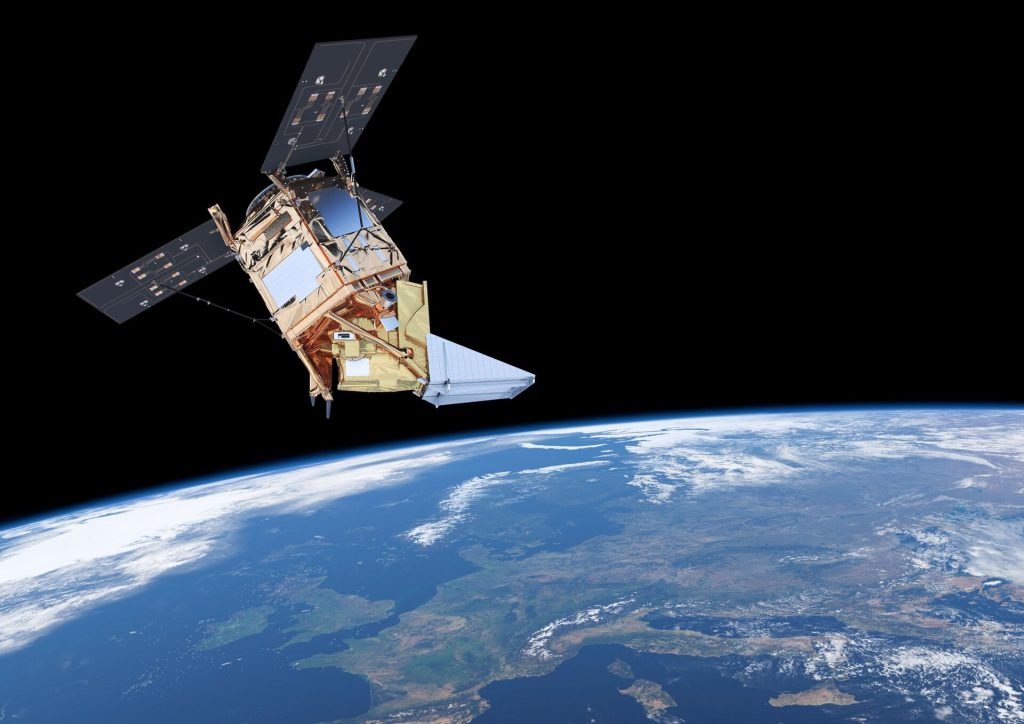
![]() English below
English below

Til hamingju! ? Þú fannst loftgæðavöktunarþjónustu Copernicus (CAMS)!
Leynistafurinn sem þú leitar að er: G

Safnaðu öllum stöfunum til að mynda orð og notaðu orðið til að fá verðlaun á sýningarbás Náttúrufræðistofnunar.
Hér eru nokkrar skemmtilegar staðreyndir um loftgæðavöktunarþjónustu Copernicus (CAMS):
CAMS-þjónustan fylgist með því sem er að gerast í loftinu sem við öndum að okkur. Það hjálpar vísindamönnum að skilja hluti eins og mengun og veðurfar og það hvernig andrúmsloftið breytist með tímanum.
Eitt af því mikilvægasta sem CAMS-þjónustan fylgist með eru gróðurhúsalofttegundir. Það eru lofttegundir eins og koltvísýringur sem fanga hita í andrúmsloftinu og gera jörðina heitari. CAMS (Copernicus Atmospheric Monitoring Service) hjálpar vísindamönnum að fylgjast með magni gróðurhúsalofttegunda í loftinu, svo við getum unnið að því að vernda jörðina gegn ofhitnun og haldið andrúmsloftinu heilnæmu fyrir alla.

Annað sniðugt sem CAMS fylgist með er sólargeislun! ? Það er orkan frá sólinni sem nær til jarðar. CAMS notar sérstakt gervitungl sem heitir Sentinel-5P til að mæla hversu mikið sólarljós nær til jarðar. Gögnin sem fást úr þessu hjálpa okkur að skilja sólskinsveður og koma að gagni fyrir þá sem nota sólarrafhlöður til að fá meiri orku frá sólinni!
Með CAMS-þjónustunni geta vísindamenn fylgst með loftinu í kringum jörðu. Það hjálpar okkur að viðhalda heilbrigði og vernda plánetuna okkar. Haltu áfram að rannsaka og sjáðu hvernig Copernicus hjálpar til við að hreinsa loftið og gera framtíðina bjartari!
Á kortinu má sjá svifryk (PM10) sem eru örsmáar ryk- eða reykagnir sem svífa í loftinu. Agnirnar eru svo litlar – um 10 míkrómetrar í þvermál – að þú sérð þær ekki með berum augum. Þær geta samt verið skaðlegar ef þú andar þeim að þér í miklu magni. Svifryk kemur frá ýmsum stöðum, bæði vegna athafna mannsins og frá náttúrunni sjálfri. Sem dæmi má nefna umferð bíla, verksmiðjur, rykfok og eldgos! CAMS hjálpar vísindamönnum að fylgjast með magni þessara smáu agna í loftinu svo þeir geti varað fólk við og hjálpað til við að gera loftið hreinna.
Staðan í Reykjavík núna.
Nánari upplýsingar hér: https://atmosphere.copernicus.eu/


Congratulations! ? You’ve found the Copernicus Atmospheric Monitoring Service (CAMS)!
The secret letter you are looking for is: G

Collect all the letters to form a word and use the word to get your reward at the booth from Náttúrufræðistofnun.
Here some cool things about the Copernicus Atmospheric Monitoring Service (CAMS):
This service keeps track of what’s happening in the air we breathe. It helps scientists understand things like pollution, weather, and even how the atmosphere is changing over time.
One important thing CAMS watches is greenhouse gases. These gases, like carbon dioxide, trap heat in the atmosphere, making our planet warmer. CAMS helps scientists track how much greenhouse gas is in the air, so we can work to protect the Earth from getting too hot and keep the climate healthy for everyone.

Another cool thing CAMS watches is solar radiation! ? This is the energy from the Sun that reaches the Earth. CAMS uses a special satellite called Sentinel-5P to measure how much sunlight hits the ground. Knowing this helps us understand sunny weather and also helps people with solar panels get more energy from the Sun!
With CAMS, scientists can keep an eye on the air, helping us stay healthy and protect our planet. Keep exploring and see how Copernicus is helping to clean up the air and make our future brighter!
In the following chart, PM10 is a type of tiny dust or smoke that floats in the air. These particles are so small—about 10 micrometers across—that you can’t see them, but they can still be harmful if you breathe in too much of them. PM10 comes from things like cars, factories, and even natural sources like dust storms! CAMS helps scientists track how much of this tiny dust is in the air so they can warn people and help make the air cleaner.
Find out more here: https://atmosphere.copernicus.eu/